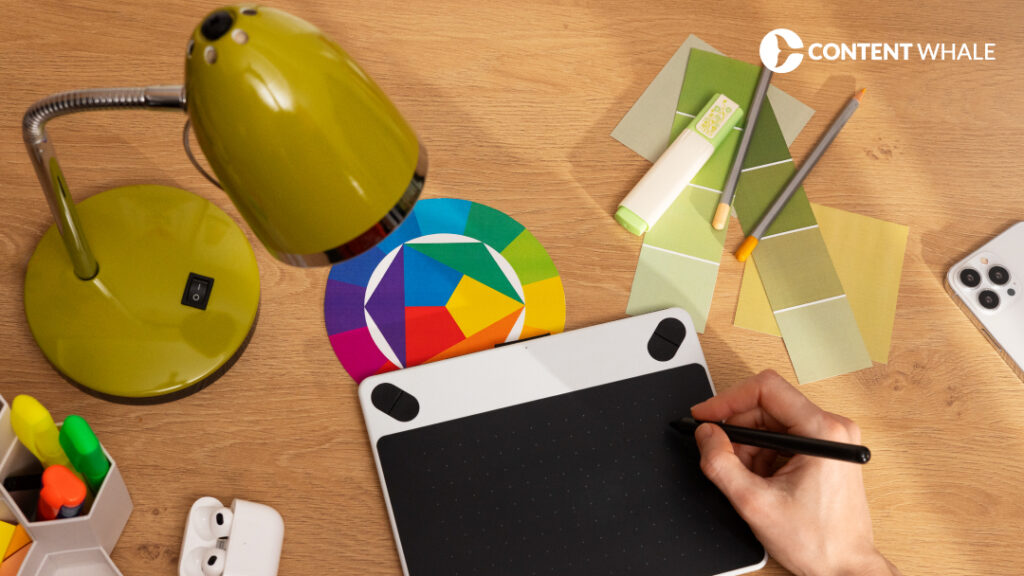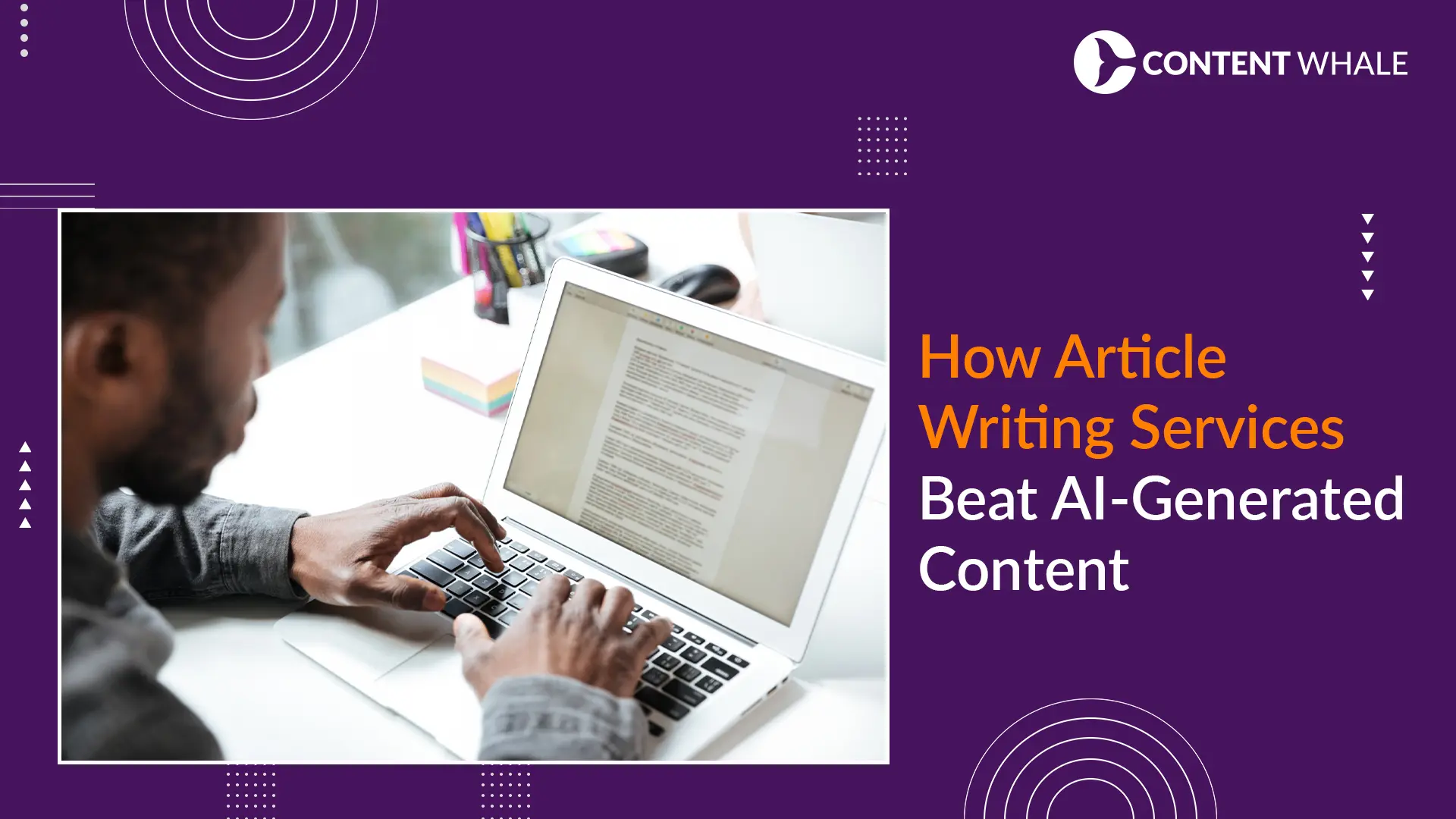When it comes to ranking well on Google, it’s no longer just about writing great content. The performance of your website, particularly in terms of Google’s Core Web Vitals, content writing core web vitals plays a huge role in how your site ranks and how users experience it. These metrics—Largest Content Paint (LCP), Cumulative Layout Shift (CLS), and First Input Delay (FID)—measure critical aspects of page performance, from load speed to visual stability and interactivity.
But here’s the good news: smart content writing can significantly improve these metrics. By optimizing how your content is structured, presented, and loaded, you can ensure that your site is both user-friendly and aligned with SEO performance metrics. In this guide, you’ll learn effective strategies for writing content that helps improve Core Web Vitals, enhancing both user experience and search rankings.
We’ll walk you through essential content and core web vitals tips that focus on improving load times, reducing layout shifts, and creating faster interactivity. Whether you’re working on mobile content optimization or aiming for better overall website performance metrics, this guide will provide practical, actionable insights.
1. What Are Google’s Core Web Vitals?
Google’s Core Web Vitals are a set of key metrics introduced to measure a website’s user experience. These metrics focus on three important areas of site performance:
- Largest Contentful Paint (LCP): Measures how fast the largest visible content element (like an image or text block) loads. A good LCP score is less than 2.5 seconds. Common issues include large images, slow server response, and render-blocking resources.
- Cumulative Layout Shift (CLS): Tracks unexpected layout shifts that affect visual stability. A good CLS score is under 0.1. Elements like images without set dimensions or dynamically injected content often cause poor CLS scores.
- Interaction to Next Paint (INP): Replacing First Input Delay (FID) in 2024, INP measures the time it takes for a page to respond to a user’s first interaction. A good INP score should be less than 200 milliseconds. Heavy scripts and long JavaScript tasks can negatively impact this score.
2. Largest Contentful Paint (LCP) and Content Writing

Largest Contentful Paint (LCP) measures the time it takes for the largest content element on a webpage to load. This is a critical aspect of Google’s Core Web Vitals as it directly impacts user experience and SEO performance metrics. The main content, such as large images, videos, or blocks of text, should load within 2.5 seconds for an optimal LCP score. If this threshold is exceeded, it can lead to higher bounce rates and lower search rankings.
a) Common Causes of Poor LCP:
- Large or unoptimized images are often the primary culprits of slow LCP times.
- Render-blocking JavaScript and CSS prevent the browser from loading critical elements quickly.
- Slow server response times also contribute to poor LCP performance.
b) Best Practices for Improving LCP Through Content:
- Resize and Compress Images: Optimizing image sizes and using formats like WebP can significantly reduce load times. This ensures that the largest contentful paint loads faster, directly improving LCP.
- Use Lazy Loading: Defer the loading of off-screen content like images and videos using lazy loading. This strategy allows essential content to load first, improving the user’s initial experience.
- Minify CSS and JavaScript: Removing or deferring non-essential CSS and JavaScript reduces render-blocking, ensuring that the primary content loads faster.
- Preload Key Resources: For critical resources, such as hero images or fonts, use preload commands to ensure they are loaded earlier in the rendering process.
3. Cumulative Layout Shift (CLS) and Content Stability
Cumulative Layout Shift (CLS) measures the visual stability of your webpage by analyzing how much content unexpectedly moves while loading. A good CLS score is under 0.1, which ensures a smooth, stable experience for users. Any sudden shifts in content can disrupt the user’s experience, affecting not only your Google Core Web Vitals SEO but also overall engagement.
a) Common Causes of Poor CLS:
- Images without defined dimensions: When image or video sizes aren’t specified, browsers can’t allocate space for them before they load, causing content to shift unexpectedly.
- Dynamically injected content: Pop-ups, ads, or media that load asynchronously can push other content down, creating noticeable shifts.
- Web fonts causing FOIT/FOUT: Fonts that don’t load properly can cause a delay in rendering text, leading to visual instability.
b) Best Practices for Minimizing CLS:
- Specify image dimensions: Always define width and height attributes for images and videos. This allows browsers to allocate the correct space before the content is fully loaded, preventing any sudden shifts.
- Use aspect-ratio boxes: For responsive images and videos, implement CSS aspect-ratio boxes to maintain the same width-to-height ratio across different screen sizes. This ensures a stable layout even when the content scales.
- Reserve space for dynamic content: Allocate fixed spaces for elements like ads or embedded media. This prevents the rest of the content from shifting when these elements load.
- Optimize web fonts: Preload fonts and use the font-display: optional property to minimize shifts caused by text rendering delays.
4. First Input Delay (FID) and Interaction to Next Paint (INP)

First Input Delay (FID), previously used as a key metric in Google’s Core Web Vitals, measures the time between a user’s first interaction (e.g., clicking a button) and when the browser responds. While FID only considers the initial delay, it doesn’t fully capture the responsiveness of the entire page during the user’s visit. This is where Interaction to Next Paint (INP) comes in.
Starting in 2024, INP has replaced FID as a more comprehensive measure of a website’s interactivity. INP records the delay not just for the first interaction but for all interactions throughout the user’s session. This makes it a more accurate reflection of the overall user experience on dynamic websites with lots of interactions.
a) Best Practices for Writing Content That Enhances INP:
- Reduce JavaScript Execution Times: Heavy JavaScript processing can delay user interactions. To improve INP, optimize JavaScript by deferring non-essential scripts and breaking down long tasks. This keeps the main thread available for responding quickly to user inputs.
- Use Efficient Event Handlers: Avoid complex or frequently firing event handlers. Techniques like debouncing and throttling can reduce the load on the browser and minimize interaction delays.
- Minimize Repaints and Reflows: Ensure that CSS and animations don’t trigger unnecessary layout recalculations, as these slow down the browser’s ability to process user inputs and present updates quickly.
5. Optimizing Mobile Content for Core Web Vitals
As mobile-first indexing becomes the primary method Google uses to rank websites, optimizing your mobile content for Core Web Vitals is crucial for success. The mobile experience directly impacts SEO performance metrics, as poor load times or interactivity on mobile devices can negatively affect your rankings.
a) Key Areas for Mobile Optimization:
- Reduce Largest Contentful Paint (LCP): Mobile devices often have slower connections and limited processing power. Compress images and minimize heavy content at the top of the page to reduce LCP. Techniques like lazy loading can ensure only the necessary content is loaded immediately, improving mobile content optimization.
- Minimize Cumulative Layout Shift (CLS): Ensure all media elements, like images and ads, have predefined dimensions to prevent unexpected layout shifts. This is especially important for mobile where space is limited, and shifts can be more disruptive.
- Improve Interaction to Next Paint (INP): Optimize JavaScript and reduce heavy third-party scripts that block interaction on mobile. Break up long tasks into smaller ones, ensuring that mobile users get quicker responses to their taps and clicks.
b) Best Practices:
- Responsive Design: Ensure your website uses a responsive design that adapts smoothly to various screen sizes. This helps keep content accessible and visually stable, improving both CLS and LCP scores on mobile.
- Avoid Intrusive Interstitials: Pop-ups or ads that cover the screen can harm your CLS score and frustrate mobile users. Instead, use subtle prompts or delay pop-ups until after the user interacts with your content.
| # | Step | Description | Benefits |
| 1 | Analyze Current Performance | Use tools like Google PageSpeed Insights or the Web Vitals Extension to assess mobile performance. Focus on LCP, INP, and CLS metrics. | Identifies specific areas for improvement, helping you focus on fixing critical issues first. |
| 2 | Optimize Images | Compress and resize images for mobile devices. Use modern formats like WebP to reduce load times and improve LCP. | Improves load speed, reduces data usage, and enhances user experience on mobile. |
| 3 | Minimize JavaScript and CSS | Reduce unnecessary CSS and JavaScript, and utilize lazy loading for mobile to avoid blocking critical content. This enhances both INP and CLS. | Faster page interactivity and stability, reducing bounce rates due to slow responsiveness. |
| 4 | Enable Browser Caching | Cache elements like images and fonts in the user’s browser to improve loading times for returning mobile users, enhancing LCP. | Reduces server load and speeds up subsequent visits, improving user retention. |
| 5 | Preload Critical Resources | Preload key resources such as fonts and hero images to ensure faster loading times, improving LCP on mobile. | Ensures essential elements load immediately, enhancing first impressions and UX. |
| 6 | Use Responsive Design | Ensure your site adapts smoothly across all screen sizes. Responsive design helps maintain visual stability and reduces CLS. | Delivers a consistent experience across devices, increasing user satisfaction. |
| 7 | Avoid Pop-ups and Intrusive Ads | Pop-ups that obscure content can disrupt CLS. Ensure all ads and dynamic content have defined spaces. | Reduces frustration and prevents unexpected shifts, leading to higher engagement. |
| 8 | Test and Monitor Regularly | Continuously monitor mobile performance using Search Console or PageSpeed Insights to track ongoing improvements in Core Web Vitals. | Ensures long-term performance optimization, keeping your site competitive and up-to-date. |
6. Tools to Measure Content Impact on Core Web Vitals

| # | Tool | Key Features | Ideal User |
| 1 | Google PageSpeed Insights (PSI) | Analyzes both lab and field data using CrUX for real-world insights and Lighthouse for lab metrics. Provides suggestions for improving LCP, INP, and CLS. | Website Owners, Marketers |
| 2 | Lighthouse | Provides in-depth performance audits for Core Web Vitals, accessibility, and SEO. Integrated with Chrome DevTools. | Web Developers, SEO Specialists |
| 3 | Chrome User Experience Report (CrUX) | Provides field data based on real user experiences, available via BigQuery or the CrUX API for detailed insights. | Data Analysts, Technical SEOs |
| 4 | Web Vitals Chrome Extension | A browser extension offering real-time Core Web Vitals metrics, including LCP, INP, and CLS, with instant feedback. | Developers, Webmasters |
| 5 | Google Search Console (GSC) | Offers a Web Vitals report that shows field data across all pages on your site, helping identify URLs with poor performance. | SEO Managers, Website Owners |
| 6 | Chrome DevTools Performance Panel | Provides lab data on Core Web Vitals, allowing you to record and analyze page load performance. Useful for diagnosing issues. | Developers, Performance Engineers |
| 7 | Real User Monitoring (RUM) Tools | Includes tools like Google Analytics and New Relic that track actual user interactions with your website, providing real-world Core Web Vitals data. | Marketers, Data Analysts |
Measuring the impact of content on Core Web Vitals is crucial for optimizing your site’s performance. Several tools help you analyze and improve these metrics, ensuring your content enhances Largest Contentful Paint (LCP), Cumulative Layout Shift (CLS), and Interaction to Next Paint (INP).
a) Google PageSpeed Insights
PageSpeed Insights provides both lab and field data to assess how well your content impacts Core Web Vitals. It offers a detailed breakdown of LCP, CLS, and INP scores, with actionable insights to improve them. This tool is particularly effective for spotting performance bottlenecks such as unoptimized images or blocking scripts.
b) Google Search Console (GSC)
GSC’s Core Web Vitals report offers URL-level and domain-level insights, especially useful for monitoring the performance of content across your entire site. This tool highlights problematic pages and helps you track improvements after implementing changes.
c) Chrome User Experience Report (CrUX)
CrUX collects real-world data from actual users, providing valuable field data on how your website performs. It’s ideal for identifying issues that lab data may miss, especially for websites with significant traffic.
d) Lighthouse
Lighthouse audits your site’s performance in real-time, offering detailed reports on Core Web Vitals, including LCP and INP. Integrated within Chrome DevTools, it helps you identify and fix issues that affect how your content performs in relation to Core Web Vitals.
7. Writing Content with Performance in Mind: Best Practices
When creating content for the web, it’s essential to consider not just quality, but also how that content impacts Core Web Vitals. Here are some best practices to ensure your content contributes to a fast, stable, and interactive user experience, while boosting your Google Core Web Vitals SEO.
a) Write Concise, Structured Content
Breaking up long blocks of text into shorter paragraphs and using headings improves readability and reduces rendering time. Content structure for Core Web Vitals is crucial, as well-organized content loads faster and enhances Largest Contentful Paint (LCP) scores.
b) Use Optimized Media
Images and videos are often the heaviest elements on a webpage. Ensure you’re using optimized images, preferably in formats like WebP, and implement lazy loading to delay the loading of off-screen media. This helps speed up LCP, ensuring the largest visible content element loads within 2.5 seconds.
c) Limit External Scripts
Heavy JavaScript and third-party scripts can delay user interactivity and impact Interaction to Next Paint (INP). Minimizing or deferring these scripts reduces blocking time and ensures your page responds quickly to user actions.
d) Preload Key Content
Preloading critical resources, such as fonts and hero images, can greatly improve load times by ensuring they load as soon as the page begins rendering. This practice is essential for optimizing LCP, especially for content-heavy pages.
e) Reserve Space for Media
Define dimensions for images and videos to prevent unexpected layout shifts that negatively affect Cumulative Layout Shift (CLS). Setting width and height attributes ensures the page layout remains stable, even before the media fully loads.
f) Test and Iterate
Regularly monitor your site’s performance using tools like Google PageSpeed Insights and Search Console. Continuously refine your content and technical setup based on Core Web Vitals metrics to keep improving user experience and SEO rankings.
8. Case Study: Content Writing and Improved Core Web Vitals
A great example of how content writing can impact Core Web Vitals is from a non-profit organization that faced a significant drop in website traffic and user engagement due to poor performance metrics. Their site struggled with long load times and a suboptimal user experience, resulting in declining search visibility and lower conversion rates.
a) Key Issues Identified:
- Largest Contentful Paint (LCP) was 4.6 seconds, much slower than the recommended 2.5 seconds.
- First Input Delay (FID) was a staggering 420 milliseconds, severely affecting interactivity.
- Cumulative Layout Shift (CLS), although within acceptable limits at 0.08, still required fine-tuning for better user stability.
To address these issues, several strategies were implemented:
- Optimizing Images and Media: Large, uncompressed images were slowing down load times, impacting LCP. By compressing and optimizing images and implementing lazy loading, the LCP was reduced to 2.3 seconds, improving visual load performance.
- JavaScript Minimization: Heavy JavaScript was a key factor contributing to delays in user interaction, inflating FID. By reducing render-blocking scripts and optimizing load order, the FID score improved drastically to 57 milliseconds.
- Improving CLS with Predefined Dimensions: Ensuring that images and other media elements had predefined dimensions helped eliminate unexpected layout shifts, ultimately bringing CLS to a perfect score of 0.
b) Results:
- Website traffic increased by 27% in just a few months, with a gain of over 7,000 sessions per month.
- Search engine impressions surged by 35,000 per month, as search rankings improved due to better Core Web Vitals scores.
- The improvements in LCP, FID, and CLS contributed directly to higher user engagement, lower bounce rates, and increased conversions.
Conclusion

As we’ve explored, Core Web Vitals play a significant role in both SEO performance and user experience. These metrics, including Largest Contentful Paint (LCP), Interaction to Next Paint (INP), and Cumulative Layout Shift (CLS), are not just technical benchmarks but key indicators of how well a site meets user expectations. Optimizing your content for these vitals—through strategies like improving content structure, compressing images, and minimizing render-blocking resources—can dramatically enhance site performance.
Ultimately, content writing that prioritizes speed, stability, and responsiveness is essential for meeting the demands of both users and search engines. By applying these best practices, you can ensure that your site not only ranks better on Google but also delivers a superior user experience that drives engagement and conversions.
At Content Whale, we specialize in crafting SEO-optimized content that not only engages your audience but also improves Core Web Vitals like LCP, INP, and CLS. Our team is dedicated to enhancing your website’s performance and rankings. Let us help you create content that drives results and improves user experience!
FAQs
1. How do Core Web Vitals impact SEO rankings?
Core Web Vitals, including Largest Contentful Paint (LCP), Interaction to Next Paint (INP), and Cumulative Layout Shift (CLS), directly affect how Google evaluates a site’s performance and user experience. Pages with better Core Web Vitals scores are more likely to rank higher, as Google prioritizes fast, responsive, and stable websites. These metrics are key in improving not only search rankings but also user engagement and conversions.
2. What are the best practices for writing content that improves LCP?
To improve LCP, focus on optimizing large content elements like images and text. This includes compressing images, using efficient formats like WebP, and preloading important resources, such as hero images, to reduce loading times.
3. How can I reduce CLS caused by dynamic content?
Reducing CLS involves setting explicit size attributes for all media (images, videos) and reserving space for dynamic content like ads. This ensures that no unexpected shifts occur during page loading.
4. Does optimizing content for Core Web Vitals affect mobile performance?
Yes, mobile optimization is crucial for improving Core Web Vitals. Compressing images, reducing render-blocking scripts, and ensuring that content is mobile-friendly can improve metrics like LCP and CLS on mobile devices.
5. Which tools are best for measuring content’s impact on Core Web Vitals?
Use tools like Google PageSpeed Insights, Search Console, and Lighthouse to assess and improve Core Web Vitals performance across your site. These tools provide actionable insights into LCP, INP, and CLS.





